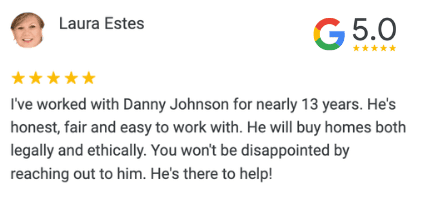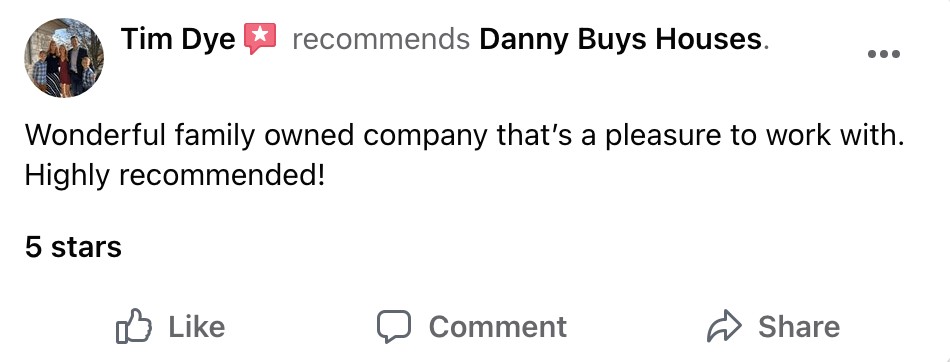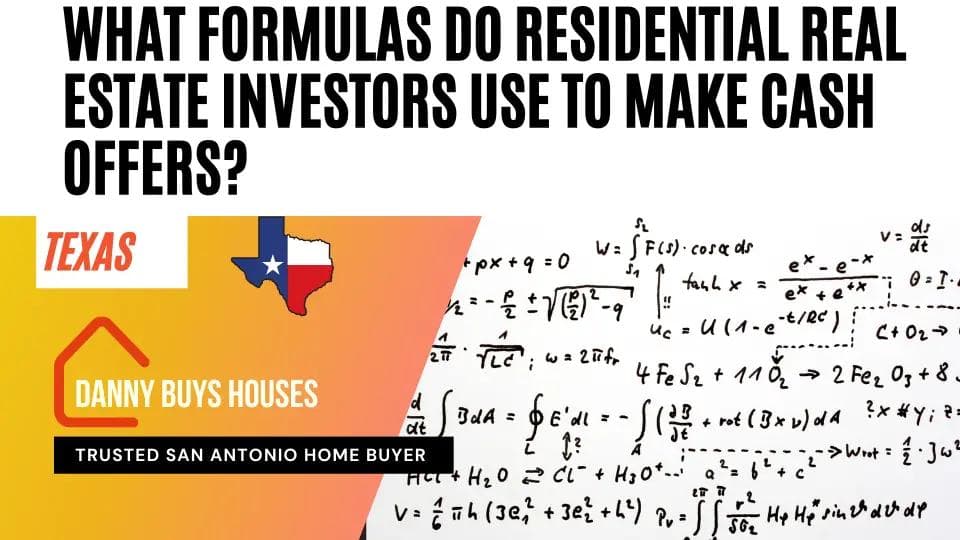
What Formulas Do Residential Real Estate Investors Use to Make Cash Offers?
By Danny Johnson | Updated 3/30/2025, 3:40:23 PM
Discover essential formulas and a cash offer calculator to help residential real estate investors estimate the best cash offer for your property.
- Key Takeaways
- Essential Financial Metrics for Real Estate Investment Analysis
- Net Operating Income (NOI) Calculation
- Capitalization Rate for Property Valuation
- Cash on Cash Return Assessment
- Debt Service Coverage Ratio Analysis
- What Formulas Do Residential Real Estate Investors Use
- The 70% Rule for Fix-and-Flip Properties
- The 1% Rule for Rental Properties
- Gross Operating Income Calculation
- Equity Build-Up Rate Formula
- Get a Cash Offer From Danny Buys Houses
🗂 Table of Contents
As I sip my morning coffee, I think about my real estate journey. That first spark of excitement is unforgettable. It's what drives us all. Today, I'm excited to share some insider tips for making cash offers on investment properties.
Real estate investing is more than just buying properties. It's about making smart decisions for profit. We use formulas to analyze deals and predict their cash-on-cash yield. These formulas are our guide to future profits.
This is why we buy houses cash in San Antonio, Texas. Of course we also get fulfillment from helping homeowners solve their real estate problems.
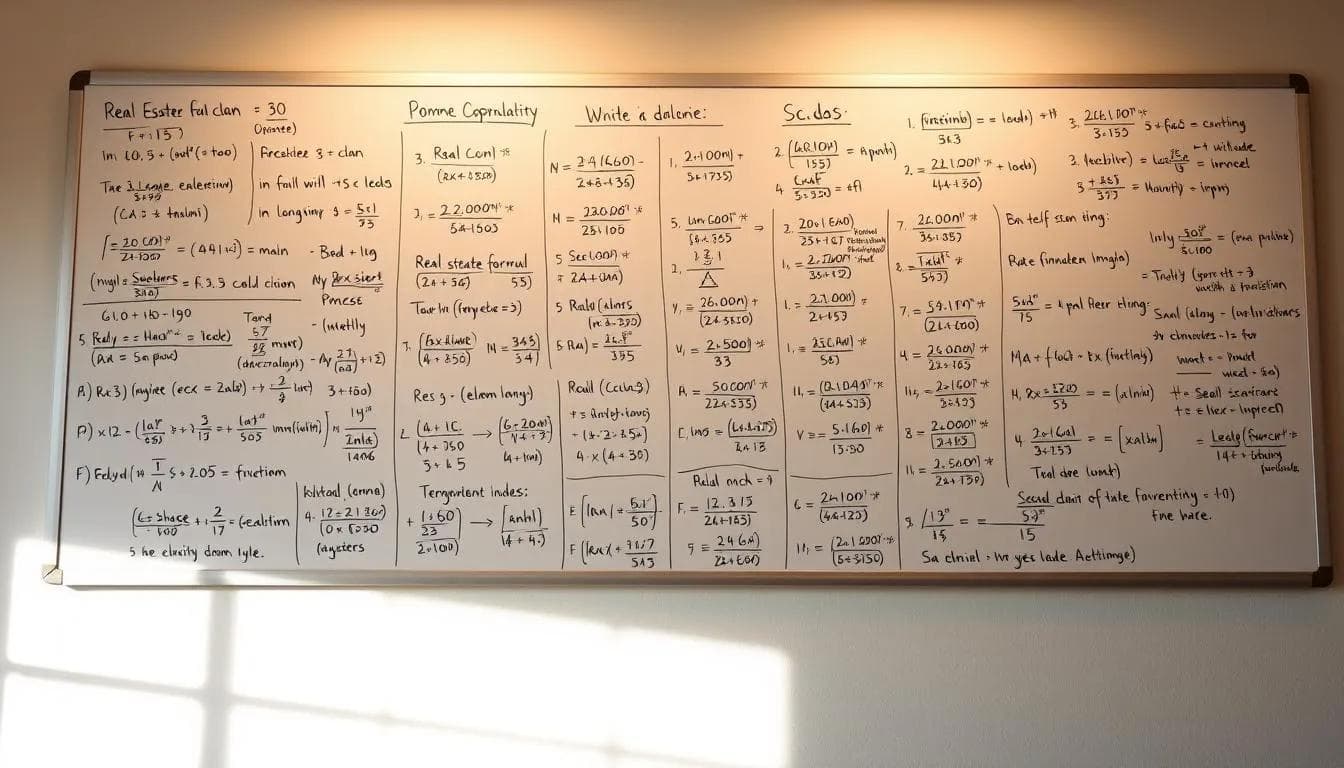
But these formulas are more than math. They help us make confident choices, reduce risk, and increase our ROI. Whether you're starting or growing your portfolio, knowing these formulas is key to winning cash offers.
So, let's dive into real estate investing formulas. By the end of this, you'll be ready to analyze properties with confidence. Let's explore how to make smart cash offers together!
If you are considering sell your house to a real estate investor, this will help you understand how they are going to evaluate your home to make your cash offer.
Key Takeaways
- Real estate investing formulas are essential for making informed cash offers
- Cash-on-cash return helps assess potential cash flow relative to invested equity
- Net Operating Income (NOI) is a crucial metric in property valuation
- Capitalization rate (cap rate) helps compare different investment opportunities
- Debt Service Coverage Ratio (DSCR) indicates a property's ability to cover loan payments
- Understanding these formulas empowers investors to make confident decisions
- Each formula provides unique insights into a property's potential profitability
Essential Financial Metrics for Real Estate Investment Analysis
Want to make smart real estate investment decisions? You need to know your numbers! Let's dive into the key metrics that'll help you evaluate properties like a pro.
Net Operating Income (NOI) Calculation
NOI is the heartbeat of your property's financial health. It's simple: total rental income minus operating expenses. For example, if your property brings in $120,000 yearly and costs $40,000 to run, your NOI is $80,000. This figure helps you gauge a property's profitability before considering financing costs.
Capitalization Rate for Property Valuation
The cap rate is your crystal ball for property value. Divide NOI by the property's market value and multiply by 100. If that $80,000 NOI property is worth $1,000,000, your cap rate is 8%. Higher cap rates often mean higher risk and potential returns.
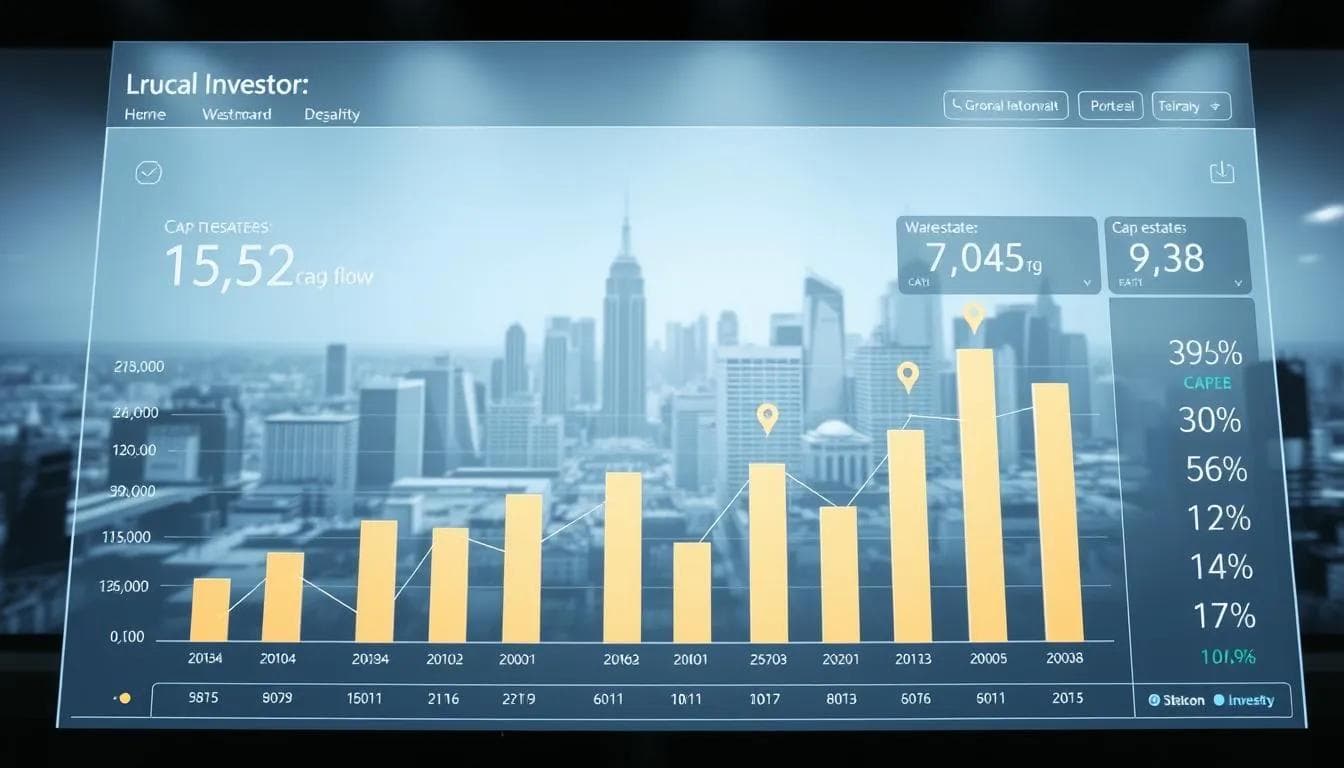
Cash on Cash Return Assessment
This metric shows how hard your cash is working for you. Divide your annual pre-tax cash flow by your total cash invested. If you're netting $80,000 on a $300,000 investment, your cash on cash return is a sweet 26.67%. It's a great way to compare different investment opportunities.
Debt Service Coverage Ratio Analysis
DSCR tells you if a property can pay its debts. Divide NOI by total annual debt payments. A DSCR of 1.33 means your property generates 33% more income than needed for debt payments. Lenders love to see a DSCR between 1.25 and 1.5.
Master these metrics, and you'll be well-equipped to spot winning investments and avoid money pits. Remember, real estate success is all about the numbers!
What Formulas Do Residential Real Estate Investors Use
Real estate investors use key formulas to make smart choices. These formulas help them figure out property values, profits, and investment plans. Let's look at some important calculations for fix-and-flip and rental properties.
The 70% Rule for Fix-and-Flip Properties
The 70% rule is a key formula for fix-and-flip investors. It sets the maximum price for a property. The formula is:
Maximum Purchase Price = (ARV x 0.7) - Rehab Estimate
ARV stands for After Repair Value. This rule makes sure investors have enough profit after costs and selling expenses. Costs will include how much it will cost to fix up the house.
The 1% Rule for Rental Properties
The 1% rule is a quick way to check if a rental property is good. It says the monthly rent should be at least 1% of the purchase price. For example, a $200,000 property should rent for at least $2,000 a month. This rule helps investors quickly see if a rental is worth it.
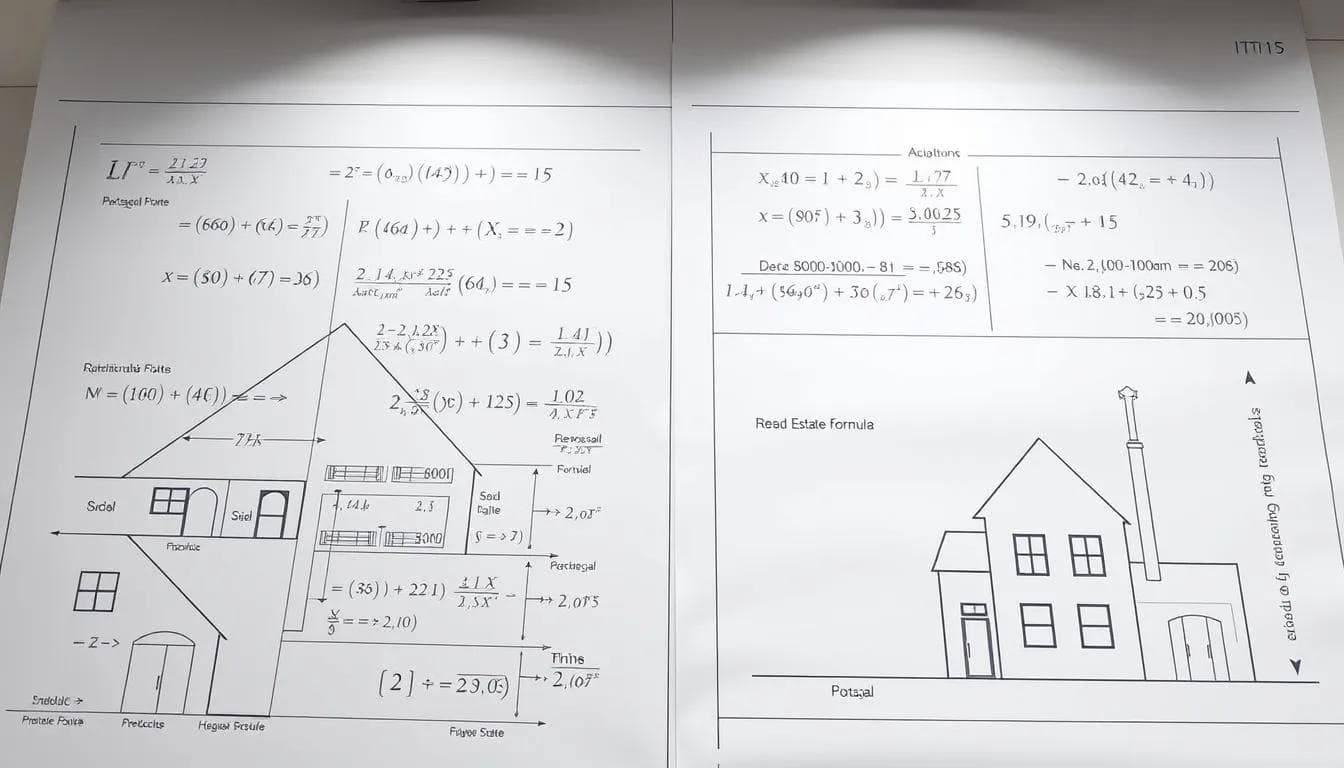
Gross Operating Income Calculation
Gross operating income shows how well a property is doing financially. It's found by subtracting vacancy and credit losses from potential rental income. This gives investors a clear view of expected income before expenses.
Equity Build-Up Rate Formula
Equity build-up is how much an owner's equity in a property grows over time. It's found by comparing the property's current value to the remaining mortgage balance. This formula helps investors see their growing ownership and return on investment.
Knowing these formulas is key for any real estate investor. They offer valuable insights for making smart choices in fix-and-flip and rental markets. For more detailed explanations of these and other real estate formulas, check out our comprehensive guide.
Get a Cash Offer From Danny Buys Houses
Looking to sell your house fast without dealing with complex formulas? Danny Buys Houses is your top cash buyer in San Antonio! We know the home selling process can be tough, with lots of numbers and calculations.
Unlike long, slow real estate deals, we offer a fast solution. Our team has done hundreds of deals. We make it easy to get a fair cash offer for your home, usually in 24-48 hours.
Want a hassle-free selling experience? We're all about being clear and simple. Just contact us, and we'll visit your property to make a no-obligation offer. No need for repairs, showings, or long talks. We aim to make selling your home easy and quick, so you get cash when you need it.
Don't let real estate investing stress you out. Whether your home needs work or you just want a fast sale, Danny Buys Houses is here. Call us today for a free, no-pressure cash offer and enjoy a stress-free home sale!
Frequently Asked Questions
In this section we will answer the most common questions to what formulas are used to figure out a cash offer for house flippers
What is the After Repair Value (ARV) formula used by house flippers?
The After Repair Value (ARV) is an estimate of a property's value after all repairs and renovations have been completed. It is typically determined by comparing similar properties in the area that have sold recently. The formula does not involve complex calculations but requires market analysis to find comparable sales.
How do house flippers use the 70% Rule to make a cash offer?
The 70% Rule helps determine the maximum price a house flipper should pay for a property. It states that an investor should pay no more than 70% of the ARV minus repair costs. Formula: Maximum Purchase Price = (ARV × 0.7) - Estimated Repair Costs.
What role do estimated repair costs play in calculating a cash offer for flipping houses?
Estimated repair costs are crucial as they directly impact profitability. They must be subtracted from potential earnings (such as those predicted by ARV) when using formulas like the 70% Rule to ensure that there is enough margin for profit after repairs.
Why is it important to include holding and transaction costs in cash offer calculations?
Holding and transaction costs can significantly affect profits if not accounted for. These include expenses such as mortgage payments, utilities, insurance while holding the property, closing costs, agent fees upon selling, etc., which all need consideration when making offers.
How do investors calculate potential profit from flipping houses before making an offer?
Potential profit can be calculated by taking the ARV and subtracting purchase price, repair costs, holdingtransaction costs, and desired profit margin. This ensures that all expenses are covered and a profitable return on investment is achieved.

AUTHOR
Danny Johnson
Owner and Founder at Danny Buys Houses
Danny Johnson is an experienced real estate investor who has been buying houses for cash since 2003. As owner of Danny Buys Houses, Danny's goal is to help homeowners sell their house fast, regardless of the situation, so they can move on with their life.
Danny has been featured in publications such as Forbes, Realtor.com, BiggerPockets, Yahoo Finance, US News, and more. He is also the author of the book 'Flipping Houses Exposed'.


